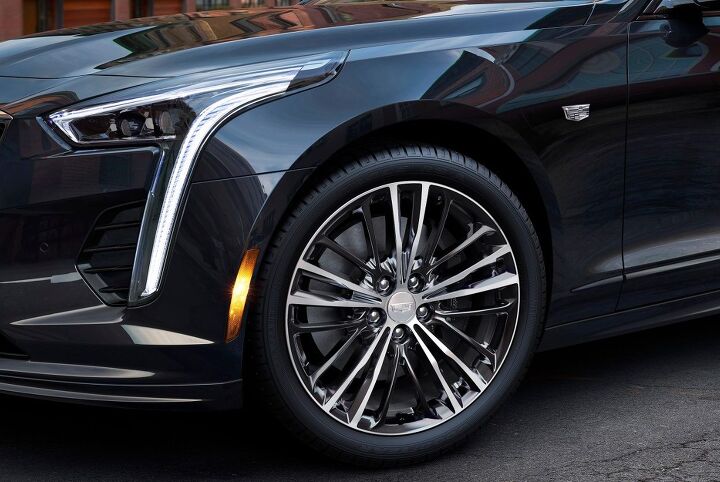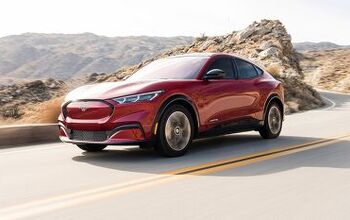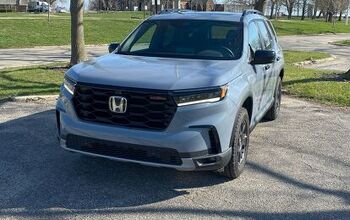Cadillac Doesn't Want to Share Its Blackwing V8

With the 2019 Cadillac CT6-V drawing its power from General Motors’ new 4.2-liter twin-turbo V8, it was only a matter of time before people started wondering where else the “Blackwing” motor might crop up. Thus far, the engine has only appeared in the CT6 sedan — producing an impressive 550 hp and 627 lb-ft of torque.
Future models are likely to include the brand’s Escalade SUV, but the luxury brand wants to put the kibosh on any rumors that the Blackwing will be available under another brand. When asked if the motor would be a cross-brand system by Motor Trend, Cadillac President Steve Carlisle responded with “over my dead body.”
However, it wouldn’t make much sense for the company to hoard a motor that currently only exists within one model with an uncertain future. Detroit/Hamtramck Assembly, which produces the CT6 (along with the Chevrolet Impala), is expected to close as a result of GM’s restructuring program. Fortunately, the luxury sedan received an extension. Initially slated to end domestic production this spring, the CT6 will stick around a bit longer so Cadillac can figure out what to do with it.
From Motor Trend:
But GM has extended CT6 production through January 2020 and that could be extended further. The automaker is still looking at alternatives, one of which is tweaking the platform a bit so assembly could shift to the Grand River Lansing plant alongside the XT5 and XT6.
The CT6 is also assembled in China for that market but Carlisle would rather not make China the sole global source and have to export it and deal with tariffs and logistics.
We imagine it won’t make much difference what Carlisle wants if GM cannot make a case to keep the model in North America. While the automaker typically struggles to move more than 10,000 examples per year in the United States, it saw 17,223 deliveries in China for 2018.
The Blackwing is helping to build interest. Of the 275 CT6-V sedans allocated to the U.S. with the new twin-turbo V8, all were spoken for within a matter of hours of the company accepting orders. While this is a unique situation, spurred by the new engine and an expansion of the V-Series sub-brand, the limited availability may only be temporary. Carlisle has already said the company has held a few back, though it is not clear who they’re being saved for — or how long until they’ll be made available.
We’ve already learned that a detuned version of the Blackwing is on the way. According to reports, that unit will generate 500 hp and 553 lb-ft of torque using the same 10-speed transmission found in the CT6-V. Unfortunately, it will only be available through the new CT6 Platinum 4.2 trim, which carries a proposed MSRP of $96,790. That’s about 7 grand dearer than the CTS-V, but a relative bargain when cross-shopping against German rivals touting similar specifications — at least on paper.
[Images: General Motors]

A staunch consumer advocate tracking industry trends and regulation. Before joining TTAC, Matt spent a decade working for marketing and research firms based in NYC. Clients included several of the world’s largest automakers, global tire brands, and aftermarket part suppliers. Dissatisfied with the corporate world and resentful of having to wear suits everyday, he pivoted to writing about cars. Since then, that man has become an ardent supporter of the right-to-repair movement, been interviewed on the auto industry by national radio broadcasts, driven more rental cars than anyone ever should, participated in amateur rallying events, and received the requisite minimum training as sanctioned by the SCCA. Handy with a wrench, Matt grew up surrounded by Detroit auto workers and managed to get a pizza delivery job before he was legally eligible. He later found himself driving box trucks through Manhattan, guaranteeing future sympathy for actual truckers. He continues to conduct research pertaining to the automotive sector as an independent contractor and has since moved back to his native Michigan, closer to where the cars are born. A contrarian, Matt claims to prefer understeer — stating that front and all-wheel drive vehicles cater best to his driving style.
More by Matt Posky
Latest Car Reviews
Read moreLatest Product Reviews
Read moreRecent Comments
- Michael Gallagher I agree to a certain extent but I go back to the car SUV transition. People began to buy SUVs because they were supposedly safer because of their larger size when pitted against a regular car. As more SUVs crowded the road that safety advantage began to dwindle as it became more likely to hit an equally sized SUV. Now there is no safety advantage at all.
- Probert The new EV9 is even bigger - a true monument of a personal transportation device. Not my thing, but credit where credit is due - impressive. The interior is bigger than my house and much nicer with 2 rows of lounge seats and 3rd for the plebes. 0-60 in 4.5 seconds, around 300miles of range, and an e-mpg of 80 (90 for the 2wd). What a world.
- Ajla "Like showroom" is a lame description but he seems negotiable on the price and at least from what the two pictures show I've dealt with worse. But, I'm not interested in something with the Devil's configuration.
- Tassos Jong-iL I really like the C-Class, it reminds me of some trips to Russia to visit Dear Friend VladdyPoo.
- ToolGuy New Hampshire




































Comments
Join the conversation
"Over my dead body." LOL. Given the life expectancy of Cadillac presidents at this point, Mr. Carlisle doesn't strike me as the intellectually-gifted sort. Then again, this is GM. Make a world-class yet unproven V-8 at a time when everyone else is easing away from them, go back and forth on canceling the only half-decent car they have to put it into, and continue to act like they still got it going on. All this while there's excess capacity of small-blocks for unsold Corvettes and Camaros. How these people make it into work without slamming a car door on their heads is a mystery. Or maybe they have and we just can't tell the difference.
IN defense of pushrods: NHRA Pro Stock V8 engines are based on the Chevrolet 454, generally around 500 cu. in. The power peak is around 10,500 (yes) rpm. Push rods can develop power north of 10,000 rpm, with no superchargers. Used to be two 4 bbl carburetors, they're now using throttle body injection I think. Push rod engines are considerably narrower than ohc engines, and lighter. The nailhead Buick engine is really narrow, big displacement engine will fit in a lot more places. Granted, breathing ain't the best. NHRA top fuel engines develop max power around 8,000 rpm. Again, 500 cu. in. displacement, pistons big as flower pots. And they currently develop somewhere around 9,000 (thousand) horsepower. I haven't paid much attention lately, the numbers may be higher now.